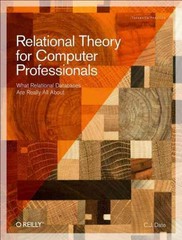Question
These questions are about partial orderings. In both questions, lower-case letters a , b , c , etc. represent arbitrary distinct objects. 1. (10 points.)
These questions are about partial orderings. In both questions, lower-case letters a, b, c, etc. represent arbitrary distinct objects.
1. (10 points.) Is the relation represented by the set S a partial ordering?
S = { (a, a), (b, b), (c, a), (c, c), (c, d), (d, c), (d, d) }
If S is a partial ordering, then explain why. If S is not a partial ordering, then state what properties of partial orderings it does not have. Also, if S does not have a property, then show a counterexample.
2. (10 points.) Suppose that the relation R is a partial ordering, so x R y means that x precedes y in the ordering. Also suppose that we know the following facts about R.
| a | R | c |
| e | R | h |
| c | R | g |
| h | R | f |
| g | R | d |
| b | R | h |
| d | R | f |
| i | R | b |
| g | R | e |
| i | R | e |
Show a total ordering ? that is compatible with what we know about the partial ordering R.
Step by Step Solution
There are 3 Steps involved in it
Step: 1

Get Instant Access to Expert-Tailored Solutions
See step-by-step solutions with expert insights and AI powered tools for academic success
Step: 2

Step: 3

Ace Your Homework with AI
Get the answers you need in no time with our AI-driven, step-by-step assistance
Get Started


